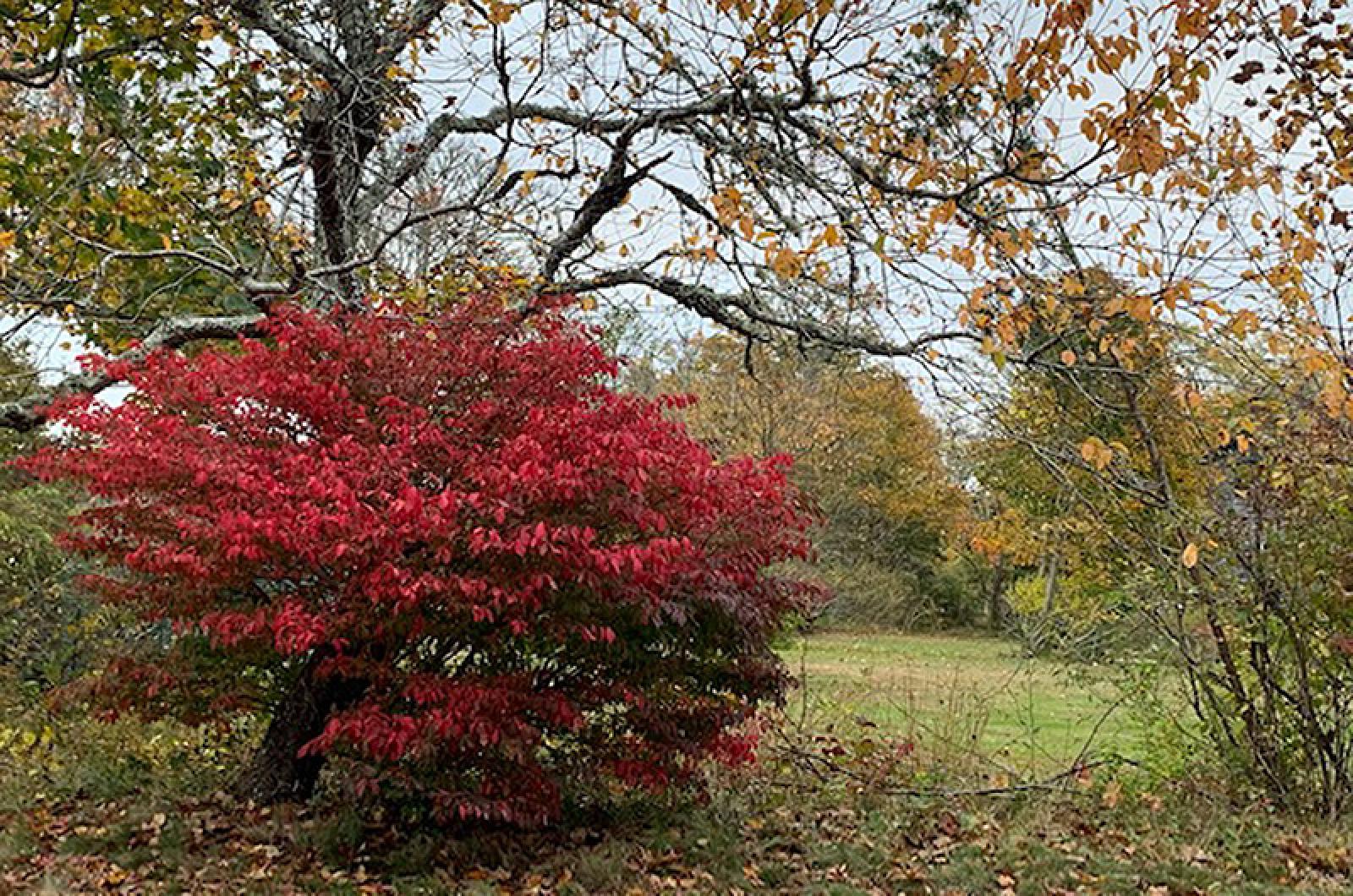This plant has some seeing red, while others see fantastic fall foliage.
Burning bush presents a burning question: to plant or not to plant? And a second question: if you already have one, to pull or not to pull?
If you live in Massachusetts, Maine or New Hampshire, your state’s government has already made that first decision for you, since importation and sale of the plant, Euonymus alantus, is prohibited. New York has taken a different approach, allowing the sale of this shrub, but requiring that it be labeled as an invasive. Other states simply list it on their invasive plant lists, but don’t regulate its sale and distribution.
Euonymus alantus, also known as winged euonymus, winged spindle tree and burning bush, is in its glorious ruddy glory right now. “Winged” describes its stems, which have cork-like edges or ridges. The word “alantus” means “with wings.”
It is hard to miss its brilliant red leaves in the landscape of unremarkable brown oak foliage that we find surrounding us, and I have observed it along New Lane, Tiah’s Cove and Edgartown-West Tisbury Roads on my daily commute.
As a non-native species, it can’t claim Islander status. It can’t even be considered a U.S. native. Brought to this country from Asia in the 1860s, burning bush was distributed widely as an ornamental, and was quickly accepted and planted along highways, in planned landscapes and yards because of its color and heartiness. So, don’t be red-faced if you planted it in the past. Having seen it everywhere, you are hardly to blame and hardly alone.
Its resistance to deer is appreciated, however. Birds greatly enjoy eating its berries, and have helped the plant spread along roadsides, waste places and in forest and fields. It can outcompete native plants, reducing their presence while enhancing its own, and has been aptly described by one botanist as “unmistakably a thug.”
Some friends maintain that burning bush doesn’t spread, and say they have had it in their yard for years without issue and that its beauty outweighs its badness. An interesting middle-of-the-road approach comes from the University of Connecticut where they have developed a sterile cultivar of this and other invasive plants. In the case of burning bush, the cultivar called Rudy Haag is just about sterile, producing around a dozen seeds instead of the usual twelve thousand-plus per plant of the regular variety.
This discovery could be a boon to the ornamental plant industry, if it can be replicated with other desired invasive species. Burning bush is a top cash crop, so a sterile version would, for birds, plant purveyors and for homeowners, be like having your cake and eating it too.
Or, you can just consider alternatives when you need color in your life. Chokeberry, viburnum, sweetspire, high bush cranberry, fragrant sumac and blueberries have been suggested as replacements. With those others in mind, consider giving the boot to burning bush and giving those replacements the red-carpet treatment and know that your landscape will be beautiful, beneficial and still resplendent in red.
Suzan Bellincampi is director of the Felix Neck Wildlife Sanctuary in Edgartown, and author of Martha’s Vineyard: A Field Guide to Island Nature and The Nature of Martha’s Vineyard.




Comments
Comment policy »